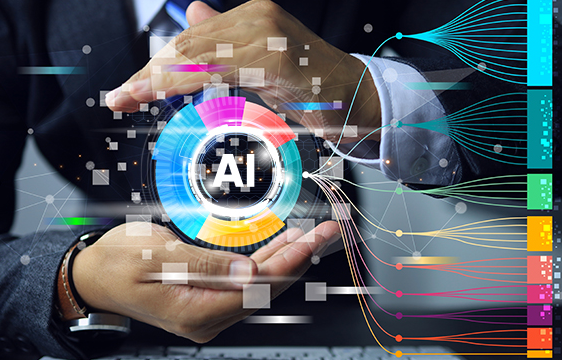Introduction
As the demand for digital content continues to grow, video streaming platforms are leveraging the power of Artificial Intelligence (AI) to enhance user experiences. One of the most powerful applications of AI in the media industry is personalized video recommendations. By analyzing user behavior, preferences, and viewing habits, AI algorithms can suggest videos that are most likely to appeal to individual viewers. This technology not only enhances user engagement but also increases platform retention. In this article, we explore how AI-powered video recommendations are personalizing viewer experiences and shaping the future of digital content consumption.
1. How AI-Powered Video Recommendations Work
AI-driven video recommendations rely on machine learning algorithms and data analysis to understand viewer preferences and suggest relevant content. These systems gather data from a user’s interactions with the platform, including what videos they watch, like, share, or comment on. By analyzing this data, AI algorithms learn patterns and preferences, allowing the system to recommend videos that align with the user’s interests.
There are different types of recommendation systems used in AI-powered video suggestions:
-
Collaborative Filtering: This method analyzes the viewing habits of similar users to predict what videos a particular viewer might enjoy. For example, if two users watch similar videos, the system might recommend content that one of them has liked but the other hasn’t yet seen.
-
Content-Based Filtering: This system recommends videos based on the content itself. For instance, if a user frequently watches cooking videos, the algorithm will suggest similar videos based on keywords, topics, and metadata related to cooking.
-
Hybrid Models: Some platforms use a combination of collaborative and content-based filtering to improve recommendation accuracy.
2. Enhancing User Engagement with Personalized Content
AI-powered recommendations are designed to enhance the viewer experience by delivering content that is relevant and engaging. Personalized video suggestions keep users engaged longer, as they are more likely to watch videos that align with their interests. As a result, users spend more time on the platform, leading to higher engagement rates.
For example, platforms like YouTube, Netflix, and Spotify use AI to recommend videos, shows, or music based on past viewing habits, user preferences, and interactions. Personalized suggestions make it easier for viewers to discover content that fits their tastes, without having to sift through endless options.
3. Improving Content Discovery for Users
With the sheer volume of content available online, finding videos that match personal interests can be overwhelming. AI-powered recommendations simplify this process by presenting users with curated suggestions that suit their preferences. These algorithms help viewers discover new genres, channels, or creators they might not have encountered otherwise, broadening their content horizons.
This increased content discovery benefits both viewers and content creators. Viewers get personalized video suggestions that resonate with their interests, while creators can reach new audiences who may enjoy their content but wouldn’t have found it through traditional search methods.
4. Data-Driven Personalization for Different Viewing Contexts
AI can also tailor video recommendations based on the context in which users are watching. For instance, some platforms take into account the time of day, location, and device being used to offer personalized suggestions. A user who watches educational videos during the day may receive different recommendations compared to someone watching entertainment videos at night.
Additionally, AI can adjust recommendations based on viewing patterns. If a user consistently watches short-form videos, the system may prioritize recommending bite-sized content over longer videos. This context-driven personalization ensures that viewers always receive the most relevant suggestions based on their viewing habits.
5. Benefits for Content Creators and Platforms
AI-powered recommendations not only benefit viewers but also provide significant advantages for content creators and platforms:
-
Increased Reach and Visibility: By using AI to suggest videos to relevant audiences, platforms can help content creators reach a wider and more targeted audience. Viewers who are likely to enjoy the content are more likely to see it in their recommendations, increasing exposure for the creator.
-
Higher Engagement and Retention: Personalized recommendations encourage users to return to the platform regularly, boosting retention rates. When viewers are continuously presented with content that interests them, they are more likely to remain engaged over time, leading to longer viewing sessions.
-
Monetization Opportunities: For content creators, AI-powered recommendations can lead to more views, which in turn can generate more ad revenue or subscription sign-ups. By connecting the right audience to the right content, both platforms and creators can benefit financially.
6. Privacy and Ethical Considerations
While AI-powered recommendations offer numerous benefits, it’s important to address privacy and ethical considerations. Collecting and analyzing user data for personalized recommendations can raise concerns about data privacy and security. It’s crucial for platforms to be transparent about how they collect and use user data, ensuring that privacy policies are clearly communicated to users.
Additionally, platforms must ensure that their recommendation algorithms are not biased and do not promote harmful content. AI systems should be designed to prioritize diversity, inclusivity, and accuracy in the recommendations they generate. Ethical considerations around AI-powered recommendations must be addressed to prevent the spread of misinformation, echo chambers, or content that may be harmful to users.
7. The Future of AI-Powered Video Recommendations
Looking ahead, the future of AI-powered video recommendations is full of potential. As AI technology advances, recommendation algorithms will become even more sophisticated, able to understand deeper nuances in user behavior and preferences. With the integration of more advanced machine learning models, recommendations will become even more accurate, ensuring that viewers are presented with content that is not only relevant but also more personalized and engaging.
Moreover, AI may be integrated with other technologies such as augmented reality (AR) and virtual reality (VR) to create immersive viewing experiences. Imagine personalized video recommendations in an AR or VR environment where content can be recommended based on how a viewer interacts with virtual objects or spaces. The possibilities for AI in video recommendation systems are vast and exciting.
Conclusion
AI-powered video recommendations are revolutionizing the way viewers interact with digital content. By personalizing suggestions based on individual preferences, AI enhances user engagement, simplifies content discovery, and drives platform retention. For content creators and platforms, AI recommendations provide a powerful tool for increasing visibility, engagement, and monetization. As the technology continues to evolve, AI-powered recommendations will become an even more integral part of the digital media landscape, offering viewers a more personalized and enjoyable experience. However, it is important for platforms to address privacy and ethical concerns to ensure the responsible use of AI in content recommendations.






